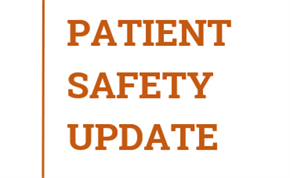Date:
26 April 2024
Page URL:
https://ntk.eastamb.nhs.uk/news/recognising-pulmonary-embolism.htm?pr=
Recognising Pulmonary Embolism

Sixty-thousand people are estimated to die of a pulmonary embolism (PE) every year in the UK alone. Add in five other European countries* and that number tops 300,000 – and 59% of those deaths were following undiagnosed venous thromboembolism.
These figures show how important it is for us to provide an early and accurate diagnosis; a PE occurs when a thrombus, or clot, that has formed in a large vein (frequently the lower leg) becomes dislodged and is carried through the venous system before entering into the pulmonary circulation. Small PEs may go undetected as they filter into the pulmonary bed and the patient may even be asymptomatic, but, if the embolism is large it can block pulmonary blood vessels - causing sudden death.
As the ‘third most common cardiovascular disease’ (Cameron et al, 2015), data suggests that if left untreated PE has high mortality. Potential signs and symptoms of PE are:
- dyspnoea
- pleuritic chest pain
- raised respiratory and heart rate
- decreased oxygen saturation
- haemoptysis
- pallor
As clinicians we should employ a multi-modal approach to our patient assessment, taking into account the patient’s history (including relevant risk factors), their physical appearance and presenting signs and symptoms.
JRCALC also recommends the use of the Wells criteria. This is a score based on the clinical presentation of a patient to predict the likelihood that they are suffering with a PE. The patient is scored as follows:
|
Symptom |
Score |
|
Clinical signs and symptoms of DVT (leg swelling and pain with palpation of the deep veins) |
3 |
|
PE is the most likely diagnosis |
3 |
|
Heart rate >100bpm |
1.5 |
|
Immobilisation or surgery in the previous four weeks |
1.5 |
|
Previous DVT/PE |
1.5 |
|
Haemoptysis |
1 |
|
Active malignancy |
1 |
|
Clinical probability of PE
|
High >6 points Moderate 2-6 points Low <2 points |
The Wells criteria is, as with all scoring systems, fallible and therefore shouldn’t form the basis of your diagnosis, but it should add to your overall impression of the patient.
Remember, even if your patient scores low on the Wells criteria, it isn’t enough to rule out a PE. Take into account deteriorating physiology, your patient’s appearance and their history in conjunction with this scoring system.
This Patient Safety Update can be downloaded as a PDF document below.
Published 13th January 2021
